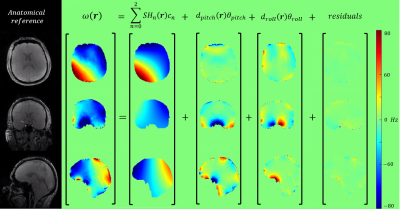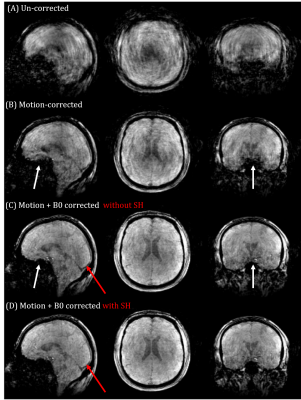Yannick Brackenier1,2, Lucilio Cordero-Grande1,2,3, Raphael Tomi-Tricot1,2,4, Tom Wilkinson1,2, Jan Sedlacik1,2, Philippa Bridgen1,2, Sharon Giles1,2, Shaihan Malik1,2, Enrico De Vita1,2, and Joseph V Hajnal1,2
1Biomedical Engineering Department, School of Biomedical Engineering and Imaging Sciences, King's College London, London, United Kingdom, 2Centre for the Developing Brain, School of Biomedical Engineering and Imaging Sciences, King's College London, London, United Kingdom, 3Biomedical Image Technologies, ETSI Telecomunicación, Universidad Politécnica de Madrid and CIBER-BNN, Madrid, Spain, 4MR Research Collaborations, Siemens Healthcare Limited, Frimley, United Kingdom
1Biomedical Engineering Department, School of Biomedical Engineering and Imaging Sciences, King's College London, London, United Kingdom, 2Centre for the Developing Brain, School of Biomedical Engineering and Imaging Sciences, King's College London, London, United Kingdom, 3Biomedical Image Technologies, ETSI Telecomunicación, Universidad Politécnica de Madrid and CIBER-BNN, Madrid, Spain, 4MR Research Collaborations, Siemens Healthcare Limited, Frimley, United Kingdom
Fully data-driven retrospective motion
correction is applied for volumetric brain MRI at 7T by including
pose-dependent field in the forward model. Reduced motion corruption is obtained
for the proposed reconstruction and is validated on an in-vivo spoiled gradient
echo acquisition.

Figure 1: Relative B0 field changes $$$\omega(\textbf{r})$$$ in the head frame between two poses, obtained after registration, can be decomposed in lower-degree solid harmonics (n=2) and localised fields
that are proportional to rotation angles $$$\theta_{pitch}$$$ and $$$\theta_{roll}$$$ (12 and 10 degrees for this example). The
linear model $$$d(\textbf{r})$$$ (not shown here) was fitted on a total of 8 motion-free scans. Data shown here is not used in further reconstructions and only served to validate our model.

Figure 2: Sagittal (left), transversal (middle) and coronal (right)
view of the (A) uncorrected (B) motion-corrected and proposed motion + B0 reconstruction (C) without and (D) with considering the solid harmonics (SH). Reduced motion corruption is observed when
including the pose-dependent B0 fields with the biggest contribution coming
from the linear B0 model,
resulting in recovered signal near air-tissue interfaces (white arrows) and improved contrast, e.g. around the
ventricles. Residual improvements are obtained when including the solid harmonics (red arrows).
